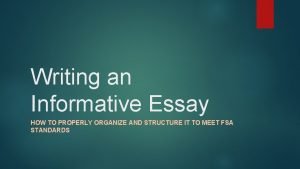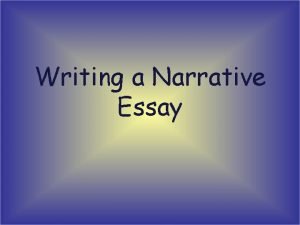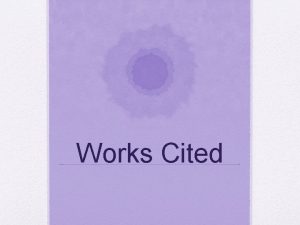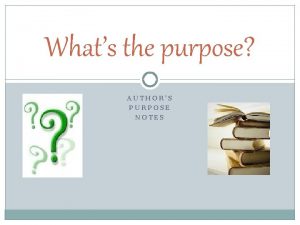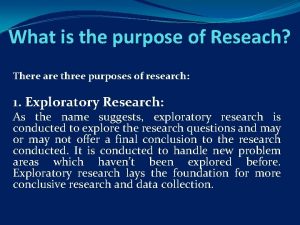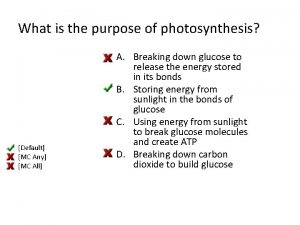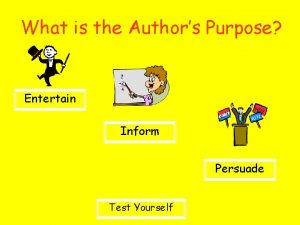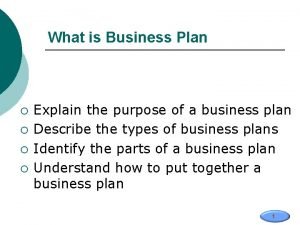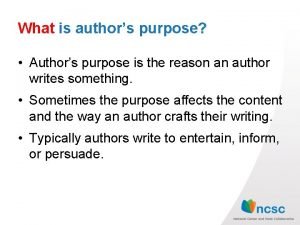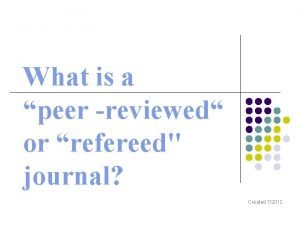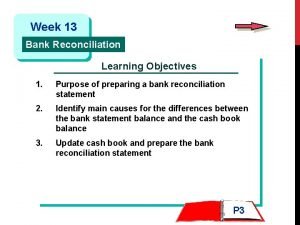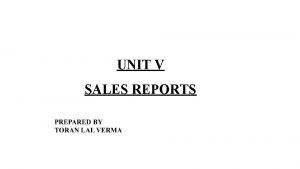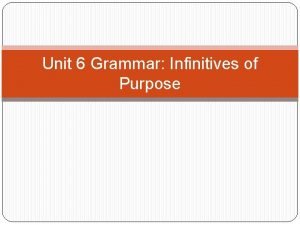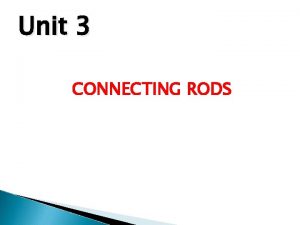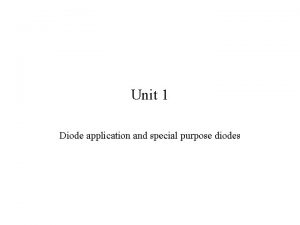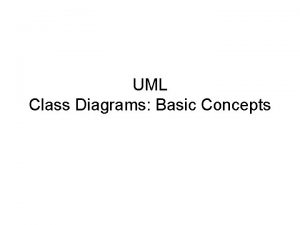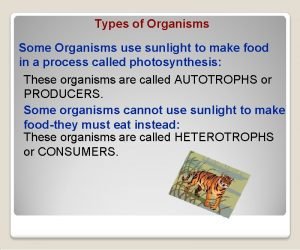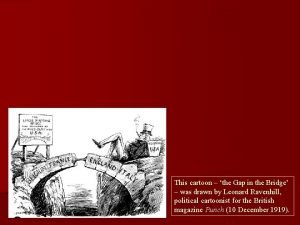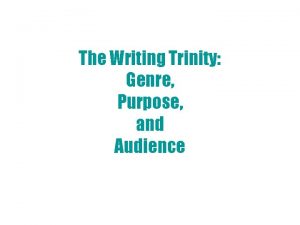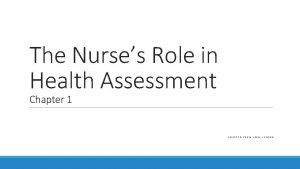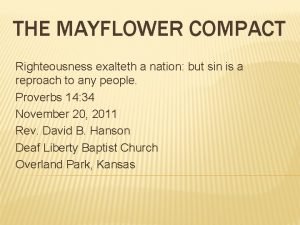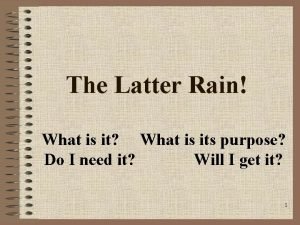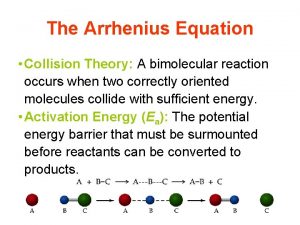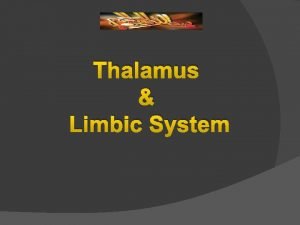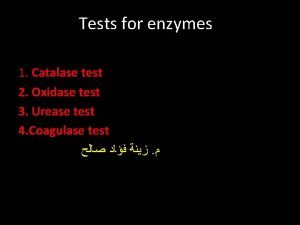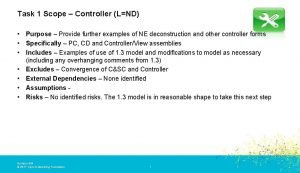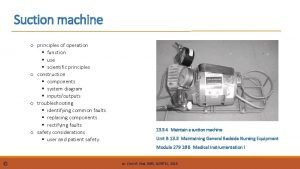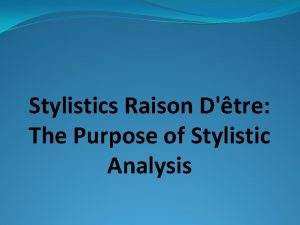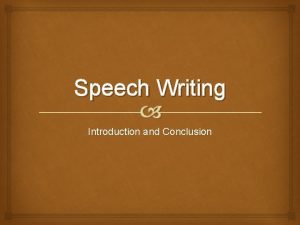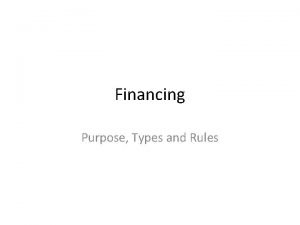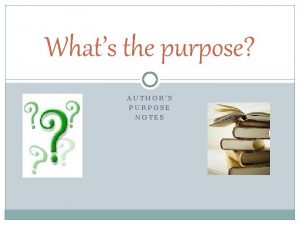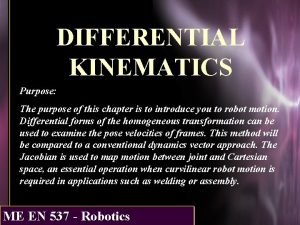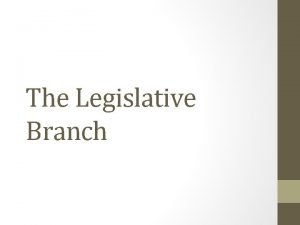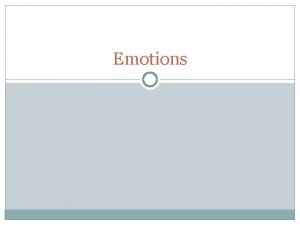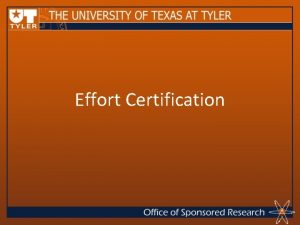The purpose of this chapter In this chapter



































































































- Slides: 99


The purpose of this chapter • In this chapter we examine how forward prices and futures prices are related to the spot price of the underlying asset. Forward contracts are easier to analize than futures contracts because there is no daily settlement---only a single payment at maturity. • Forward prices(遠期價格), future prices(期貨價格)和 spot prices(即期價格)的關係

P 99 • Luckily it can be shown that the forward price and futures price of an asset are usually very close when the maturities of the two contracts are the same. • 當這遠期和期貨契約的到期的時間一樣時,遠期和期貨的 價格會很相近。

5. 1 INVESTMENT ASSETS vs CONSUMPTION ASSETS • 投資性資產和消費性資產 • An investment asset is an asset that is held for investment purposes by significant numbers of investors. • 投資性資產主要是特定的投資人因投資目的持有

P 99 Investment assets • Stocks and bonds are clearly investment assets. Gold and silver are also examples of investment assets. Note that investment assets do not have to be held exclusively for investment. (silver, for example, has a number of industrial uses) P 99 • 股票、 債券 、 金、銀 都是投資性資產

P 99 Consumption asset • A consumption asset is an asset that is held primarily for consumption. It is not usually held for investment. Examples of consumption assets are commodities such as copper, oil, and pork bellies • 消費性資產 顧名思義 持有的目的是消費上使用

5. 2 SHORT SELLING • Some of the arbitrage strategies presented in this chapter involve short selling. This trade , usually simply referred to as”shorting”, involves selling an asset that is not owned. • Short selling(空頭),以下內容要闡明的是銷售不屬於 自己的資產(股票)來獲取利益 • p 99

p 100 • Suppose an investor instructs a broker to short 500 IBM shares. The broker will carry out the instructions by borrowing the shares from another client and selling them in the market as usual way. • 現在要作空,但是是向自己客戶借來的股票,然後再銷售 出去。

p 100 • the investor will close out the position by purchasing 500 IBM shares. • These are then replaced in the acount of the client from which the shares were borrowed. (投資人會賣掉向顧客借來的股票,最 後再把股票買回,股票最後再歸還給客戶)

p 100 • The investor takes a profit if the stock price has declined and a loss if it has risen, . (這 項操作是有期限的)If at any time while the contract is open , the broker is not able to borrow shares, the investor is forced to close out the position, even if not ready to do so.

Short sale of shares • April: Borrow 500 shares and sell them for 120 +60000 • May: Pay dividend - $500 • July: Buy 500 shares for $100 per share -$50000 • Replace borrowed shares to close short position • 償還,歸還向顧客所借的股票 • Net profit= +$9500 • P 100投資人那一方

Table 5 -1 cash flow from short sale and purchase of shares • Purchase of shares • April: purchase 500 shares for 120$ -$60000 • May: Receive dividend +500 • July: Sell 500 shares for $100 per share • • p 100 投資人的反方 +50000 Net profit= -9500

Margin Account (融資帳戶) • The investor is required to maintain a Margin account with the broker. The margin account consists of cash or marketable securities deposited by the investor with the broker to guarantee that investor will not walk away from the short position if the share price increase. P 100 • 投資人和股票經理人會共有一個融資帳戶,裡面存放兩人的現金及可 變現有價證券,當有損失時就不怕投資人逃跑。

Initial margin 原始保證金 • An initial margin is required and if there adverse movements(i. e, increase) in the price of the asset that is being shorted, additional margin may be required. If the additional margin is not provided, the short position is closed out. • 股價都會有所變動,為了確保投資人是否足以應付第一天的價 格變動,所以要付期原始證金。原始保證金還必須隨著契約價 值的變動而調整,才能充分承受契約可能產生的風險。p 101

Margin account p 101 • The margin account does not represent a cost to the investor. This is because interest is usually paid on the balance in margin accounts投資人帳戶裡的利息收入就可 維持融資帳戶的穩定。 • If the interest rate offered is unacceptable, marketable securities such as Treasury bills can be used to meet margin requirements. 但有時利息令人不悅時,也可用國庫 券來維持自有資金的部份。


p 101 • The proceeds of the sale of the asset belong to the investor and normally form part of the initial margin. • 股票銷售的收入通常也可當原始保證金

5. 3 ASSUMPTIONS AND NOTATION • 1. The market participants are subject to no transaction costs when they trade. • 市場參與者交易時 要服從無交易成本 • 2. The market participants are subject to the same tax rate on all net trading profits. • 有淨利時,要遵守相同的稅率 • P 101

5. 3 • 3. The market participants can borrow money at the same risk-free rate of interest as they can lend money • 借入和借出的無風險利率要相同 • 4. The market participants take advantage of arbitrage opportunities as they occur. • 投資人通常能在套利過程中獲利 • P 101

The following notation will be used throughout this chapter: • T: Time until delivery date in a forward or future contract (in years) • 遠期和期貨契約從交易形成至交貨日的期間 • Sο: Price of the asset underlying the forward or futures contract today. • 一個資產在遠期或期貨契約的價格 • p 101

p 101 • Fο: Forward or futures price today. • 今天的遠期或期貨價格 • r : Zero-coupon risk-free rate of interest per annum, expressed with continuous compounding • 每一年零息債券的無風險利率是採連續複 利

p 101 • The risk-free rate, r, is the rate at which money is borrowed or lent when there is no credit risk, so that the money is certain to be repaid. • r 不論是借入和借出,它都沒有信用風險,所以 錢一定會還清

p 101 • Financial institutions and other participants in derivatives markets assume that LIBOR rate rather than Treasury rates are the relevent risk-free rates. • LIBOR(London Inter. Bank Offered Rate )倫敦銀 行同業拆借利率 • 一些財務機構認為倫敦銀行同業拆借利率和無風 險利率攸關,而不是國庫利率。

5. 4 Forward price for an investment asset 投資資產的期貨價格 • The easiest forward contract to value is one written on an investment asset that provides the holder with no income. • Non-dividend-paying stocks and zerocoupon bonds are examples of such investment assets

Table 5. 2 Forward Price=$43 Action now: • Borrow $40 at 5% for 3 months • Buy one unit of asset • Enter into forward contract to sell asset in 3 months for $43 Action in 3 months: • Sell asset for $43 • Use $40. 5 to repay loan with interest Ø Profit realized=$2. 5 Forward Price=$39 Action now: • Short 1 unit of asset to realize $40 • Invest $40 at 5% for 3 months • Enter into a forward contract to buy asset in 3 months for $39 Action now: • Buy asset for $39 • Close short position • Receive $40. 5 from investment Ø Profit realized=$1. 5

Example 5. 1 Consider a 4 -month forward contract to buy a zero-coupon bond that will mature 1 year from today. (This means that the bond will have 8 months to go when the forward contract matures. ) The current price of the bond is $930. We assume that the 4 -month risk-free rate of interest (continuously compounded) is 6% per annum.

5. 5 KNOWN INCOME 已知收入 • In this section we consider a forward contract on an investment asset that will provide a perfectly predictable cash income to the holder.

• Consider a long forward contract to purchase a coupon-bearing bond whose current price is $900. • We will suppose that the forward contract matures in 9 months. • We will also suppose that a coupon payment of $40 is expected after 4 months. • We assume that the 4 -month and 9 -month riskfree interest rate (continuously compounded) are, respectively, 3% and 4% per annum. P. 105 第一段

• Suppose first that the forward price is relatively high at $910. An arbitrageur can borrow $900 to buy the bond and short a forward contract. • The coupon payment has a present value of 40 e-0. 03*4/12 =$39. 60 • Of the $900, $39. 60 is therefore borrowed at 3% per annum for 4 month so that it can be repaid with the coupon payment. The remaining $860. 40 is borrowed at 4% per annum for 9 months. P. 105 第二段

• The amount owing at the end of the 9 -month period is 860. 40 e 0. 04*0. 75=886. 60. • A sum of $910 is received for the bond under the terms of the forward contract. The arbitrageur therefore makes a net profit of 910. 00 - 886. 60 = 23. 40 P. 105 第二段

• Suppose next that the forward price is relatively low at $870. An investor can short the bond and enter into a long forward contract. • Of the $900 realized from shorting the bond, $39. 6 is invested for 4 months at 3% per annum so that it grows into an amount sufficient to pay the coupon on the bond. • The remaining $860. 40 is invested for 9 month at 4% per annum and grows to $886. 60. Under the terms of the forward contract, $870 is paid to buy the bond and the short position is closed out. The investor therefore gains 886. 60 – 870 = $16. 60 P. 105 第三段

• The two strategies we have considered are summarized in Table 5. 3. • The first strategy in Table 5. 3 produces a profit when the forward price is greater than $886. 60, whereas the second strategy produces a profit when the forward price is less than $886. 60. • It follows that if there are no arbitrage opportunities then the forward price must be $886. 60. P. 105 第四段

• We can generalize from this example to argue that, when an investment asset will provide income with a present value of I during the life a forward contract, we have (5. 2) F 0 = (S 0 - I)er. T • In our example, S 0 = 900. 00, I = 40 e-0. 03*4/12 =$39. 60, r = 0. 04, and T = 0. 75, so that F 0 = (900. 00 – 39. 60)e 0. 04*0. 75 = $886. 60 P. 105 A generalization

• If F 0 > (S 0 - I)er. T, an arbitrageur can lock in a profit by buying the asset and shorting a forward contract on the asset. • If F 0 < (S 0 - I)er. T, an arbitrageur can lock in a profit by shorting the asset and taking a long position in a forward contract. • If short sales are not possible, investors who own the asset will find it profitable to sell the asset and enter into long forward contracts. P. 105 A generalization

• Consider a 10 -month forward contract on a stock when the stock price is $50. • We assume that the risk-free rate of interest (continuously compounded) is 8% per annum for all maturities. • We also assume that dividends of $0. 75 per share expected after 3 months, 6 months, 9 months. The present value of the dividends, I, is I=0. 75 e-0. 08*3/12+0. 75 e-0. 08*6/12+0. 75 e-0. 08*9/12= 2. 162 P. 106 Example 5. 2

• The variable T is 10 months, so that the forward price, F 0, from equation (5. 2), is given by F 0 = (50 – 2. 162)e 0. 08*10/12 = $51. 14 • If the forward price were less than this, an arbitrageur would short the stock and buy forward contracts. If the forward price were greater than this, an arbitrageur would short forward contracts and buy the stock in the spot market. P. 106 Example 5. 2

5. 6 KNOWN YIELD 已知報酬率 • We now consider the situation where the asset underlying a forward contract provides a known yield rather than a known cash income. • Suppose that an asset is expected to provide a yield of 5% per annum. This could mean that income is paid once a year and is equal to 5% of the asset price at the time it is paid, in which case the yield would be 5% with annual compounding. P. 107

• Alternatively, it could mean that income is paid twice a year and is equal to 2. 5% of the asset price at the time it is paid, in which case the yield would be 5% per annum with semiannual compounding. • In Section 4. 2 we explained that we will normally measure interest rate with continuous compounding. Similarly, we will normally measure yields with continuous compounding. • Define q as the average yield per annum on an asset during the life of a forward contract with continuous compounding. It can be shown that F 0 = S 0 e(r-q)T P. 107 第六行

• Consider a 6 -month forward contract on an asset that is expected to provide income equal to 2% of the asset price once during a 6 -month period. The risk-free rate of interest (with continuous compounding) is 10% per annum. The asset price is $25. • In this case, S 0 = 25, r = 0. 10, and T = 0. 5. The yield is 4% per annum with semiannual compounding. P. 107 Example 5. 3

• From equation (4. 3), this is 3. 96% per annum with continuous compounding. It follows that q = 0. 0396, so that from equation (5. 3) the forward price, F 0, is given by q = 2 ln[1+(0. 04/2)] = 0. 039605 F 0 = 25 e(0. 10 -0. 0396)0. 5 = $25. 77 P. 107 Example 5. 3

5 -7 value forward contracts • The value of a forward contract at the time it is first entered into is zero • we suppose K is the delivery price for a contract that was negotiated some time ago, the delivery date is T years form today, and r is the T-year risk-free interest rate. The variable F 0 is the forward price • f : Value of forward contract today P 107

At the beginning of the life of the forward contract, the delivery price, K, is set equal to the forward price, F 0, and the value of the contract, f, is 0. • applicable to all long forward contracts (both those on investment assets and those on consumption assets), is • f=(F 0 -K)e-r. T (5 -4) P 108

• A cash outflow difference of F 0 -K at time T translates to a difference of (F 0 -K)e-r. T • The contract with a delivery price F 0 is therefore less valuable than the contract with delivery price K by an amount (F 0 -K)e -r. T. • The value of the contract that has a delivery price of F 0 is by definition zero. It follows that the value of the contract with a delivery price of K is (F 0 -K)e-r. T. P 108

• Example 5. 4 • A long forward contract on a non-dividendpaying stock was entered into some time ago. It currently has 6 months to maturity. The risk-free rate of interest (with continuous compounding ) is 10% per annum, the stock price is $25, and the delivery price is $24. In this case, S 0=25, r=0. 10, T=0. 5, and K=24. • F 0=25 e 0. 1*0. 5=$26. 28 • f=(26. 28 -24)e -0. 1*0. 5=$2. 17 P 108

• the price of the asset at the maturity of the forward contract equals the forward price F 0. • a long forward contract provides a payoff at time T of F 0 -K. • a present value of (F 0 -K)e–r. T P 108

• the value of a forward contract on an investment asset that provides no income • f=S 0 -Ke-r. T (5. 5) • a long forward contract on an investment asset that provides a known income with present value I: • f=S 0 -I-Ke –r. T (5. 6) • the value of a long forward contract on an investment asset that provides a known yield at rate q: • F=S 0 e-q. T –Ke-r. T (5. 7) P 109

5. 8 Are forward prices and futures prices equal? (遠期價格和期貨價格是否相同) • The appendix at the end of this chapter provides an arbitrage argument to show that when the risk-free interest rat is constant and the same for all maturities, the forward prices for a contract with a certain delivery date is in theory the same as the futures prices for a contract with the delivery. • When interest rates vary unpredictably (as they do in the real world ), forward and futures prices are in theory no longer the same. P 119 -120

• We can get a sense of the nature of the relationship by considering the situation where the price of the underlying asset, S, is strongly positively correlated with interest rates. • When S increases, an investor who holds a long futures position makes an immediate gain because of the daily settlement procedure. The positive correlation indicates that it is likely that interest rates have also increased. The will gain therefore tend to be invested at a higher than average rate of internet. • When S decreases, the investor will incur an immediate loss. This loss will tend to be financed at a lower than average rate of interest.

• An investor holding a forward contract rather than a futures contract is not affected in this way by interest rate movements. • It follows that a long futures contract will be slightly more attractive than a similar long forward contract. • When S is strongly positively correlated with interest rates, futures prices will tend to be slightly higher than forward prices. When S is strongly negatively correlated with interest rates, a similar argument shows that forward prices will tend to be slightly higher than futures prices. • The theoretical differences between forward and futures prices for contracts that last only a few months are in most circumstances sufficiently small to be ignored.

• In practice , there a number of factors not reflected in theoretical model that may cause forward and futures prices to be different. These include taxes, transactions costs , and the treatment of margins. • The risk that the counterparty will default is generally less in the case of a futures contract because of the role of the exchange clearinghouse. Also, in some instances, futures contracts are more liquid and easier to trade than forward contracts. • Despite all these points, for most purpose it is reasonable to assume that forward and future prices are the same. • We will use the symbol F 0 to represent both the futures price and the forward price of an asset today.

5. 9 Futures prices of stock indices 股票指數的期貨價格 • A stock index can usually be regarded as the price of an investment asset that pays dividends. • The investment asset is the portfolio of stocks underlying the index, and the dividends paid by the investment asset are the dividends that would be received by the holder of this portfolio. • It is usually assumed that the dividends provide a known yield rather than a known cash income. If q is the dividend yield rate, equation (5. 3) gives the futures prices, F 0, as F 0=S 0 e(r-q)T This shows that futures price increases at rate r-q with the maturity of the futures contract.

Example 5 -5 • Consider a 3 -month futures contract on the S&P 500. Suppose that the stocks underlying the index provide a dividend yield of 1% per annum, that the current value of the index is 1, 300, and that the continuously compounded risk-free interest rate is 5% per annum. In this case, r=0. 05, S 0=1, 300, T=0. 25, and q=0. 01. Hence, the futures price, F 0 is give by F 0=1, 300 e(0. 05 -0. 01)*0. 25=1313. 07

Index Arbitrage 指數套利 • If F 0>S 0 e(r-q)T, profits can be made by buying the stocks underlying the index at the spot price (i. e. , for immediate delivery) and shoring futures contracts. • If F 0<S 0 e(r-q)T, profits can be made by doing the reverse-that is, shorting or selling the stocks underlying the index and taking a long position in futures contracts. • These strategies are known as index arbitrage.

• When F 0<S 0 e(r-q)T, index arbitrage is often done by a pension fund that owns an indexed portfolio of stocks. • When F 0>S 0 e(r-q)T ,it might be done by a corporation holding short-term money market investments. • For indices involving many stocks, index arbitrage is sometimes accomplished by trading a relatively small representative sample of stocks whose movements closely mirror those of the index.

• Often index arbitrage is implemented through program trading. This involves using a computer system to generate the trades. • Most of the time the activities of arbitrageurs ensure that equation holds, but occasionally arbitrage is impossible and the futures price does get out of line with the spot price.

5. 10 貨幣的遠期和期貨合約 FORWARD AND FUTURES CONTRACTS ON CURRENCIES • We now move on to consider forward and futures foreign currency contracts from the perspective of a US investor. • The underlying asset is one unit of the foreign currency. • We will therefore define the variable S 0 as the current spot price in dollars of one unit of the foreign currency and F 0 as the forward or futures price in dollars of one unit of the foreign currency. P. 112

• This consistent with the way we have defined S 0 and F 0 for other assets underlying forward and futures contracts. • However, as mentioned in Section 2. 10, it does not necessarily correspond to the way spot and forward exchange rates are quoted. • For major exchange rates other than the British pound, euro, Australian dollar, and New Zealand dollar, a spot or forward exchange rate is normally quoted as the number of units of the currency that are equivalent to one US dollar. P. 112

• A foreign currency has the property that the holder of the currency can earn interest at the risk-free interest rate prevailing in the foreign country. • We define rf as the value of the foreign risk-free rate interest rate when money is invested for time T. The variable r is the US dollar risk-free rate when money is invested for this period of time. • The relationship between F 0 and S 0 is F 0 = S 0 e ( r-rf )T P. 113

• The reason it is true is illustrated in Figure 5. 1. Suppose that an individual starts with 1, 000 units of the foreign currency. • One is by investing it for T years at rf and entering into a forward contract to sell the proceeds for dollars at time T. 1, 000 e r f T F 0 • The other is by exchanging the foreign currency for dollars in the spot market and investing the proceeds for T years at rate r. 1, 000 S 0 e r T P. 113

• In the absence of arbitrage opportunities, the two strategies must give the same result. Hence, 1, 000 e r f T F 0 = 1, 000 S 0 e r T so that F 0 = S 0 e ( r-rf )T P. 113

Example 5. 6 • Suppose that the 2 -year interest rates in Australia and the United States are 5% and 7%, respectively, and the spot exchange rate between the Australian dollar (AUD) and the US dollar (USD) is 0. 6200 USD per AUD. • From equation (5. 9), the 2 -year forward exchange rate should be 0. 62 e ( 0. 07 -0. 05 )x 2 = 0. 6453 P. 113 - 114

• Suppose first that the 2 -year forward exchange rate is less than this, say 0. 6300. An arbitrageur can: 1. Borrow 1, 000 AUD at 5% per anum for 2 years, convert to 620 USD and invest the USD at 7% (both rates are continuously compounded). 2. Enter into a forward constract to buy 1, 105. 7 AUD for 1, 105. 7 x 0. 63 = 696. 26 USD. The 620 USD in 2 year 620 e 0. 07 x 2 =713. 17 USD Riskless profit of 713. 17 - 696. 26=16. 91 USD. P. 114

• Suppose next that the 2 -year forward rate is 0. 6600 (greater than the 0. 6453 value given by equation (5. 9) ). An arbitrageur can: 1. Borrow 1, 000 USD at 7% per annum for 2 years, convert to 1, 000/0. 62=1, 612. 90 AUD, and invest the AUD at 5%. 2. Enter into a forward contract to sell 1, 782. 53 AUD for 1, 782. 53 x 0. 66=1, 176. 47 USD. The 1, 612. 90 AUD in 2 years 1, 612. 90 e 0. 05 x 2=1, 782. 53 AUD The amount needed to payoff the USD borrowings is 1, 000 e 0. 05 x 2 =1, 105. 17 USD Riskless profit of 1, 176. 47 -1, 105. 17=26. 20 USD P. 114

A Foreign Currency as an Asset Providing a Known Yield 外國貨幣作為一種資產提供了一個已知的收益 • Equation (5. 9) is identical to equation (5. 3) with q replaced by rf. This is not a coincidence. • A foreign currency can be regarded as an investment asset paying a known yield. • The yield is the risk-free rate of interest in the foreign currency. P. 115

• To understand this, we note that the value of interest paid in a foreign currency depends on the value of the foreign currency. • Suppose that the interest rate on British pounds is 5% per annum. • To a US investor the British pound provides and income equal to 5% of the value of the British pound per annum. • In other words it is an asset that provides a yield of 5% per annum. P. 115

5. 11 FUTURES ON COMMODITIES 商品期貨 • Income and Storage Costs • Gold owners such as central bands charge interest in the form of what is known as the gold lease rate when they lend gold. (這段第 2行) • Gold and silver can provide income to the holder. (第 4行) • Like other commodities they also have storage costs. (第 5行) P 115

Income and Storage Costs • F 0 = (S 0 + U)er. T (5. 11) • U is the present value of all the storage costs. ( 第二段第 1行) P 116

Example 5. 8 • Consider a 1 -year futures contract on an investment asset that provides no income. It costs $2 per unit to store the asset, with the payment being made at the end of the year. Assume that the spot price is $450 per unit and the risk-free rate is 7% per annum for all maturities. This corresponds to r = 0. 07, S 0 = 450, T =1 • U = 2 e-0. 07 × 1 = 1. 865 • F 0 = (450+1. 865)e 0. 07× 1=$484. 63

Income and Storage Costs • F 0 = S 0 e(r + u)T (5. 12) • u denotes the storage costs per annum as a proportion of the spot price net of any yield earned on the asset. (公式下一行) P 116

Consumption Commodities P 116 • Commodities that are consumption assets usually provide no income, but can be subject to significant storage costs. (這段第 1行) • F 0 > (S 0 + U)er. T (5. 13) P 116

Consumption Commodities an arbitrageur can implement the following strategy: 1. Borrow an amount S 0 + U at the risk-free rate and use it to purchase one unit the commodity and to pay storage costs. 2. Short a forward contract on one unit of the commodity. P 116

Consumption Commodities • If we regard the futures contract as a forward contract, this strategy leads to a profit of F 0 - (S 0 + U)er. T at time T. • As arbitrageurs do so, there will be a tendency for S 0 to increase and F 0 to decrease until equation (5. 13) is no longer true. • → F 0 < (S 0 + U)er. T (5. 14) P 117 (第一段)

Consumption Commodities When the commodity is an investment asset, they will find it profitable to do the following: 1. Sell the commodity, save the storage costs, and invest proceeds at the risk-free interest rate. 2. Take a long position in a forward contract. P 117 (第二段)

Consumption Commodity equation • forward and futures contracts cannot be consumed. (第 4段 第 4行) • F 0 ≦ (S 0 + U)er. T (5. 15) • If storage costs are expressed as a proportion u of the spot price • F 0 ≦ S 0 e(r + u)T (5. 16) P 117 (第四段)

Convenience Yields P 117 • The benefits from holding the physical asset are sometimes referred to as the convenience yield provided by the commodity. • If the dollar amount of storage costs is known and has a present value U, then the convenience yield y is defined. • F 0 ey. T = (S 0 + U)er. T P 117

Convenience Yields P 118 • Storage costs per unit are a constant proportion, u, of the spot price, then y defined so that • F 0 ey. T = S 0 e(r+u)T • F 0 = S 0 e(r + u - y)T or (5. 17) P 118

Convenience Yields P 118(第三段) • The greater the possibility that shortages will occur, the higher the convenience yield. (第 2行) • Inventories are low, shortages are more likely and the convenience yield is usually higher. (最 後1行) P 118 (第三段)

5. 12 THE COST OF CARRY • The relationship between futures prices and spot prices can be summarized in terms of the cost of carry. • This measures the storage cost plus the interest that is paid to finance the asset less the income earned on the asset. • For a non-dividend-paying stock, the cost of carry is r, because there are no storage cost and no income is earned; for a stock index, it is r - q, because income is earned at rate q on the asset. For a currency, it is r - rf; for a commodity that provides income at rate q and requires storage costs at rate u, it is r - q + u; and so on.

THE COST OF CARRY • Define the cost of carry as c. • For an investment asset, the futures price is F 0 = S 0 ec. T (5. 18) • For a consumption asset, it is F 0 = S 0 e(c-y)T (5. 19) • Where y is the convenience yield.

5. 13 DELIVERY OPTIONS • Where a forward contract normally specifies that delivery is to take place on a particular day, a futures contract often allows the party with the short position to choose to deliver at any time during a certain period. • The choice introduces a complication into the determination of futures prices. • Should the maturity of the futures contract be assumed to be the beginning, middle, or end of the delivery period? Even though most futures contracts are closed out prior to maturity, it is important to know when delivery would have taken place in order to calculate theoretical futures price.

DELIVERY OPTIONS • If the futures price is an increasing function of the time to maturity, it can be seen from equation (5. 19) that c > y, so that the benefits from holding the asset (including convenience yield and net of storage costs) are less than the riskfree rate. It is usually optimal in such a case for the party with the short position to deliver as early as possible, because the interest earned on the cash received outweighs the benefits of holding the asset.

DELIVERY OPTIONS • As a rule, futures prices in these circumstances should be calculated on the basis that delivery will take place at the beginning of the delivery period. • If futures price are decreasing as time to maturity increases (c < y), the reverse is true. • It is then usually optimal for the party with the short position to deliver as late as possible, and futures prices should, as a rule, be calculated on this assumption.

5. 14 FUTURES PRICES AND EXPECTED FUTURE SPOT PRICES • We refer to the marker’s average opinion about what the spot price of an asset will be at a certain future time as the expected spot price of the asset at that time. • Suppose that it is now June and the September futures price of corn is 350 cents. It is interesting to ask what the expected spot price of corn in September is.

Keynes and Hicks • Keynes and Hicks argued that, if hedgers tend to hold short positions and speculators tend to hold long positions, the futures price of an asset will be below the expected spot price. • This is because speculators require compensation for the risks they are bearing. They will trade only if they can expect to make money on average.

Keynes and Hicks • Hedgers will lose money on average, but they are likely to be prepared to accept this because the futures contract reduces their risks. • If hedgers tend to hold long positions while speculators hold short positions, the futures price will be above the expected spot price for a similar reason.

Risk and Return • In general, the higher the risk of an investment, the higher the expected return demanded by an investor. • Readers familiar with the capital asset pricing model will know that there are two types of risk in the economy: systematic and nonsystematic. • Nonsystematic risk should not be important to an investor. It can be almost completely eliminated by holding a well-diversified portfolio. An investor should not there fore require a higher expected return for bearing nonsystematic risk.

Risk and Return • Systematic risk, in contrast, cannot be diversified away. It arises from a correlation between returns from the investment and returns from the whole stock market. • An investor generally requires a higher expected return than the risk-free interest rate for bearing positive amounts of systematic risk. • Also, an investor is prepared to accept a lower expected return than the risk-free interest rate when the systematic risk in an investment is negative.

The Risk in a Futures Position • A speculator who takes a long position in a futures contract that lasts for T years in the hope that the spot price of the asset will be above the futures price at the end of the life of the futures contract. • We suppose that the speculator puts the present value of the futures price into a risk-free investment while simultaneously taking a long futures position. • The proceeds of the risk-free investment are used to buy the asset on the delivery date. The asset is then immediately sold for its market price.

The Risk in a Futures Position • The cash flows to the speculator are as follows: Today:-F 0 e-r. T End of futures contract:+ST • ST is the price of the asset at time T at the end of the futures contract. The present value of this investment is -F 0 e-r. T + E( ST ) e-k. T

The Risk in a Futures Position • Suppose that k is an investor’s required return for this investment. E denotes expected value. We can assume that all investments in securities markets are priced so that they have zero net present value. This means that -F 0 e-r. T + E( ST ) e-k. T = 0 or F 0 = E( ST ) e(r-k)T (5. 20)

The Risk in a Futures Position • As we have just discussed, the returns investors require on an investment depend on its systematic risk. If the returns from this asset are uncorrelated with the stock market, the correct discount rate to use is the risk-free rate r, so we should set k =r. Equation (5. 20) then gives F 0 = E( ST ).

The Risk in a Futures Position • If the returns from this asset is positively correlated with the stock market, k > r and equation (5. 20) leads to F 0 < E( ST ). This shows that, when the asset underlying the futures contract has positive systematic risk, we should expect the futures price to understate the expected future spot price.

The Risk in a Futures Position • If the returns from the asset is negatively correlated with the stock market, k < r and equation (5. 20) gives F 0 > E( ST ). This shows that, when the asset underlying the futures contract has negative systematic risk, we should expect the futures price to overstate the expected future spot price.

Normal Backwardation and Contango • When the futures price is below the expected future spot price, the situation is known as normal backwardation; and when the futures price is above the expected future spot price, the situation is known as contango. • However, it should be noted that sometimes these terms are used to refer to whether the futures price is blow or above the current spot price, rather than the expected future spot price.

Summary • For the purposes of understanding futures (or forward) prices, it is convenient to divide futures contracts into two categories: those in which the underlying asset is held for investment by a significant number of investors and those in which the underlying asset is held primarily for consumption purposes. • In the case of investment assets, we have considered three different situations: 1. The asset provides no income. 2. The asset provides a known dollar income. 3. The asset provides a known yield.

Summary • The results are summarized in Table 5. 5. They enable futures prices to be obtained for contracts on stock indices, currencies, gold, and silver. Storage costs can be treated as negative income. • In the case of consumption assets, it is not possible to obtain the futures price as a function of the spot price and other observable variables. • Here the parameter known as the asset’s convenience yield becomes important.

Summary • It measures the extent to which users of the commodity feel that ownership of the physical asset provides benefits that are not obtained b the holders of the futures contract. These benefits may include the ability to profit from temporary local shortages or the ability to keep a production process running. We can obtain an upper bound for the futures price of consumption assets using arbitrage arguments, but we cannot nail down an equality relationship between futures and spot prices.

Summary • The concept of cost of carry is sometimes useful. The cost of carry is the storage cost of the underlying asset plus the cost of financing it minus the income received from it. In the case of investment assets, the futures price is greater than the spot price by an amount reflecting the cost of carry. In the case of consumption assets, the futures price is greater than the spot price by an amount reflecting the cost of carry net of the convenience yield.

Summary • If we assume the capital asset pricing model is true, the relationship between the futures price and the expected future spot price depends on whether the return on the asset is positively or negatively correlated with the return on the stock market. Positive correlation will tend to lead to a futures price lower than the expected future spot price, whereas negative correlation will tend to lead to a futures price higher than the expected future spot price. Only when the correlation is zero will te theoretical futures price be equal to the expected future spot price.
 Hát kết hợp bộ gõ cơ thể
Hát kết hợp bộ gõ cơ thể Lp html
Lp html Bổ thể
Bổ thể Tỉ lệ cơ thể trẻ em
Tỉ lệ cơ thể trẻ em Chó sói
Chó sói Glasgow thang điểm
Glasgow thang điểm Chúa sống lại
Chúa sống lại Môn thể thao bắt đầu bằng chữ đua
Môn thể thao bắt đầu bằng chữ đua Thế nào là hệ số cao nhất
Thế nào là hệ số cao nhất Các châu lục và đại dương trên thế giới
Các châu lục và đại dương trên thế giới Công thức tính thế năng
Công thức tính thế năng Trời xanh đây là của chúng ta thể thơ
Trời xanh đây là của chúng ta thể thơ Mật thư anh em như thể tay chân
Mật thư anh em như thể tay chân Làm thế nào để 102-1=99
Làm thế nào để 102-1=99 Phản ứng thế ankan
Phản ứng thế ankan Các châu lục và đại dương trên thế giới
Các châu lục và đại dương trên thế giới Thơ thất ngôn tứ tuyệt đường luật
Thơ thất ngôn tứ tuyệt đường luật Quá trình desamine hóa có thể tạo ra
Quá trình desamine hóa có thể tạo ra Một số thể thơ truyền thống
Một số thể thơ truyền thống Cái miệng bé xinh thế chỉ nói điều hay thôi
Cái miệng bé xinh thế chỉ nói điều hay thôi Vẽ hình chiếu vuông góc của vật thể sau
Vẽ hình chiếu vuông góc của vật thể sau Biện pháp chống mỏi cơ
Biện pháp chống mỏi cơ đặc điểm cơ thể của người tối cổ
đặc điểm cơ thể của người tối cổ V cc cc
V cc cc Vẽ hình chiếu đứng bằng cạnh của vật thể
Vẽ hình chiếu đứng bằng cạnh của vật thể Tia chieu sa te
Tia chieu sa te Thẻ vin
Thẻ vin đại từ thay thế
đại từ thay thế điện thế nghỉ
điện thế nghỉ Tư thế ngồi viết
Tư thế ngồi viết Diễn thế sinh thái là
Diễn thế sinh thái là Các loại đột biến cấu trúc nhiễm sắc thể
Các loại đột biến cấu trúc nhiễm sắc thể Số nguyên tố là
Số nguyên tố là Tư thế ngồi viết
Tư thế ngồi viết Lời thề hippocrates
Lời thề hippocrates Thiếu nhi thế giới liên hoan
Thiếu nhi thế giới liên hoan ưu thế lai là gì
ưu thế lai là gì Sự nuôi và dạy con của hổ
Sự nuôi và dạy con của hổ Sự nuôi và dạy con của hươu
Sự nuôi và dạy con của hươu Sơ đồ cơ thể người
Sơ đồ cơ thể người Từ ngữ thể hiện lòng nhân hậu
Từ ngữ thể hiện lòng nhân hậu Thế nào là mạng điện lắp đặt kiểu nổi
Thế nào là mạng điện lắp đặt kiểu nổi Complex sentence purpose
Complex sentence purpose Specific purpose statement
Specific purpose statement Chapter 5 selecting a topic and a purpose
Chapter 5 selecting a topic and a purpose Purpose of budgeting
Purpose of budgeting Purpose of writing report
Purpose of writing report Purpose audience language layout
Purpose audience language layout What is the purpose of a response to literature essay
What is the purpose of a response to literature essay Purpose of writing reports
Purpose of writing reports What is an exposition paragraph
What is an exposition paragraph Essay conclusion examples
Essay conclusion examples Purpose of research paper
Purpose of research paper What is the purpose of a narrative paragraph
What is the purpose of a narrative paragraph Purpose of citation
Purpose of citation Whats authors purpose
Whats authors purpose Define reseach
Define reseach Purpose of photosynthesis
Purpose of photosynthesis Purpose of government
Purpose of government Persuade inform entertain examples article
Persuade inform entertain examples article Entertain inform persuade
Entertain inform persuade Selecttype
Selecttype What is author's purpose
What is author's purpose Define refereed journal
Define refereed journal Covin
Covin Objective of reconciliation statement
Objective of reconciliation statement Wastewater treatment purpose
Wastewater treatment purpose Sales report purpose
Sales report purpose Infinitive of purpose negative
Infinitive of purpose negative 4 types of connecting rods
4 types of connecting rods Special purpose diode
Special purpose diode Class diagram purpose
Class diagram purpose Where is the citric acid cycle located in the mitochondria
Where is the citric acid cycle located in the mitochondria Under the bridge cartoon
Under the bridge cartoon Genre audience purpose examples
Genre audience purpose examples Respiratory system purpose
Respiratory system purpose Purpose of descriptive paragraph
Purpose of descriptive paragraph Purpose of health assessment
Purpose of health assessment John wurzel
John wurzel Mayflower compact purpose
Mayflower compact purpose Line game freedom writers
Line game freedom writers Purpose of the latter rain
Purpose of the latter rain Ay history
Ay history The elements of dance
The elements of dance Limitations of study examples
Limitations of study examples Arrhenius equation
Arrhenius equation Purpose of olympic
Purpose of olympic Hippocampal formation
Hippocampal formation Catalase test
Catalase test Purpose of tcp
Purpose of tcp Purpose and scope example
Purpose and scope example Sports medicine taping techniques
Sports medicine taping techniques Symposium in education
Symposium in education Diagram of suction machine
Diagram of suction machine Purpose of stylistics
Purpose of stylistics Uses of job analysis
Uses of job analysis Speech ending examples
Speech ending examples Special purpose amplifiers
Special purpose amplifiers Opec purpose
Opec purpose Swounds definition
Swounds definition



















































